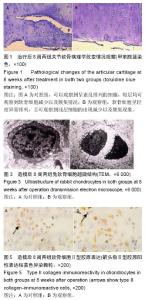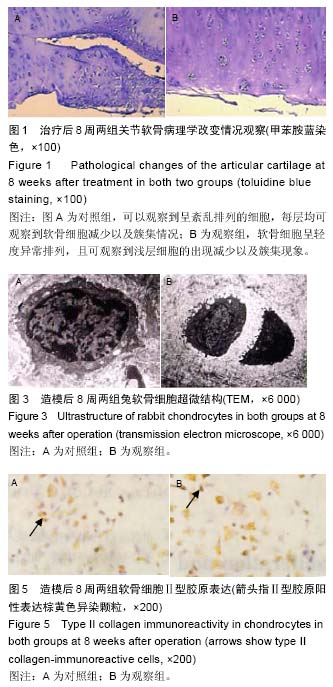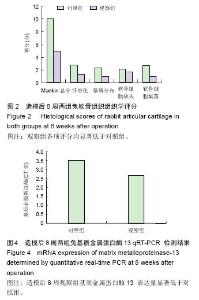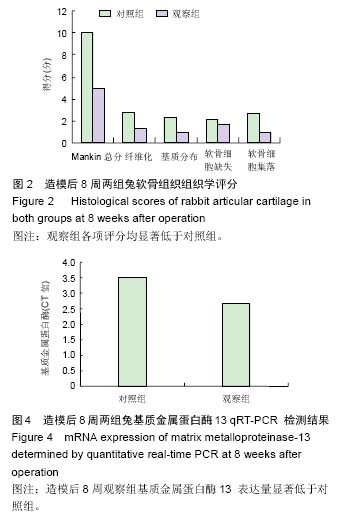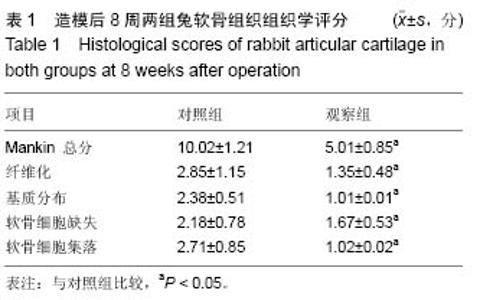| [1] 马勇,郭杨,屠娟,等.低强度脉冲超声介导威灵仙干预兔膝关节软骨细胞增殖及Ⅱ型胶原和转化生长因子β1的表达[J].中国组织工程研究,2014,18(38):6110-6115.
[2] 郭杨,马勇,董睿,等.低强度脉冲超声对兔关节软骨细胞增殖及Ⅱ型胶原表达的影响[J].安徽医科大学学报,2014, 49(12):1739-1742.
[3] 周崑,周伟,陈文直,等.低强度脉冲超声对美蓝渗入正常兔膝关节软骨的作用[J].重庆医科大学学报,2012,37(2): 121-124.
[4] 贾小林,陈文直,孙保勇,等.低强度脉冲超声对兔关节软骨损伤修复的影响[J].中华物理医学与康复杂志,2009, 31(5):305-307.
[5] 贾小林,陈文直,司海鹏,等.超声对兔关节软骨损伤的修复作用[J].中华创伤杂志,2004,20(2):97-99.
[6] 高明霞,程凯,林强,等.低强度脉冲超声波对早中期兔膝骨性关节炎软骨细胞外基质及MAPKs信号通路的影响[J].中国康复医学杂志,2013,28(7):593-599.
[7] 贾小林,陈文直,周伟,等.低强度脉冲超声对关节软骨缺损修复影响的初步观察[J].中国超声医学杂志,2003,19(12): 889-891.
[8] 邓迎生,唐昊,王秋根,等.低强度脉冲式超声促软骨修复及其基因表达研究进展[J].国际骨科学杂志,2009,30(1):10-14.
[9] Naito K,Watari T,Muta T,et al.Low-Intensity Pulsed Ultrasound (LIPUS)Increases the Articular Cartilage Type II Collagen in a Rat Osteoarthritis Model.J Orthop Res.2010;28(3):361-369.
[10] Cheng K,Xia P,Lin Q,et al.Effects of low-intensity pulsed ultrasound on integrin-FAK-PI3K/Akt mechanochemical transduction in rabbit osteoarthritis chondrocytes. Ultrasound Med Biol.2014;40(7): 1609-1618.
[11] Irrechukwu ON,Lin PC,Fritton K,et al0Magnetic resonance studies of macromolecular content in engineered cartilage treated with low-intensity pulsedultrasound.TissueEngPartA.2011;17(3-4): 407-441.
[12] 董睿.低强度脉冲超声优化组织工程化软骨的构建及其修复关节软骨缺损的实验研究[D].南京中医药大学,2013.
[13] Namazi H.Effect of low-intensity pulsed ultrasound on the cartilage repair in people with mild to moderate knee osteoarthritis: A novel molecular mechanism. Arch Phys Med Rehabil. 2012;93(10):1882.
[14] 任莎莎,李雪萍,林强,等.低强度脉冲超声经 PI3K/Akt 通路调控兔膝骨性关节炎软骨细胞凋亡的作用机制研究[J].中国康复,2015,30(2):83-87.
[15] Ito A,Aoyama T,Yamaguchi S,et al.Low-Intensity Pulsed Ultrasound Inhibits Messenger RNA Expression of Matrix Metalloproteinase-13 Induced by Interleukin-1β in Chondrocytes in an Intensity- Dependent Manner.Ultrasound Med Biol.2012;38(10): 1726-1733.
[16] 林志金,沈锋,黄建明,等.低强度脉冲式超声治疗骨及关节软骨损伤的研究进展[J].骨科,2010,01(3):167-168,封3-封4.
[17] Lu H,Qin L,Cheung W,et al.Low-intensity pulsed ultrasound accelerated bone-tendon junction healing through regulation of vascular endothelial growth factor expression and cartilage formation. Ultrasound Med Biol. 2008 Aug;34(8):1248-1260.
[18] 李雪萍,励建安.低强度脉冲超声波促进骨性关节炎软骨修复的研究进展[J].中国康复医学杂志,2010,25(12): 1204-1207.
[19] 李雪萍.低强度脉冲超声波对兔膝骨性关节炎关节软骨细胞外基质及MAPK信号通道的影响[C].//中华医学会第十四次全国物理医学与康复学学术会议论文集.2012:141-141.
[20] Ravanbod R,Torkaman G,Esteki A,et al.Comparison between pulsed ultrasound and low level laser therapy on experimental haemarthrosis. Haemophilia. 2013; 19(3):420-425.
[21] 汪方,王秋根.低强度脉冲式超声对关节软骨再生作用研究进展[J].国外医学(骨科学分册),2004,25(6):369-371.
[22] Xueping Li,Qiang Lin,Daxin Wang et al.Low-Intensity Pulsed Ultrasound Promotes Early Proliferation of Knee Articular Chondrocytes by Activating Phosphatidylinositol 3 Kinase Pathway in a Rabbit Osteoarthritis Model.Advanced Science Letters.2012;5(1):217-221.
[23] Li X, Li J, Cheng K,et al.Effect of low-intensity pulsed ultrasound on MMP-13 and MAPKs signaling pathway in rabbit knee osteoarthritis. Cell Biochem Biophys. 2011;61(2):427-434
[24] Uenaka K,Imai S,Ando K et al.Relation of low-intensity pulsed ultrasound to the cell density of scaffold-free cartilage in a high-density static semi-open culture system. J Orthop Sci. 2010 Nov;15(6):816-824.
[25] 安恒远,李雪萍,王大新,等.低强度脉冲超声波对软骨细胞中金属蛋白酶-13与Ⅱ型胶原的影响[J].中国康复医学杂志,2011,26(3):226-231. |
